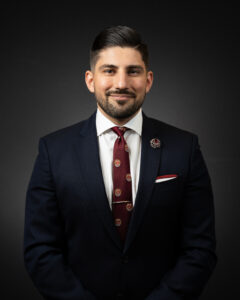Do You Have Painful Varicose Veins? Effective Vein Pain Treatment Is Available From Pain Management Specialists in Freehold, NJ
 Vein pain is often caused by swollen and enlarged veins in the legs and feet. Known as varicose veins, these veins may appear twisted, gnarled, and dark blue or purple in color. In some cases, however, varicose veins do not bulge to the point that they protrude from the skin’s surface; rather, they remain deeply buried and invisible. For this reason, the cause of vein pain is not always readily apparent.
Vein pain is often caused by swollen and enlarged veins in the legs and feet. Known as varicose veins, these veins may appear twisted, gnarled, and dark blue or purple in color. In some cases, however, varicose veins do not bulge to the point that they protrude from the skin’s surface; rather, they remain deeply buried and invisible. For this reason, the cause of vein pain is not always readily apparent.
Excessive pressure on the legs is the main cause of varicose veins. Some sources of leg pressure include pregnancy, obesity, extended standing, chronic constipation, and, less frequently, tumors.
What are the symptoms of varicose veins?
Regardless of whether they are visible, varicose veins do not always cause symptoms. When they do, the discomfort may be sporadic and occur only under certain circumstances, such as during warm weather, at the end of the day, or after an extended period of standing. The resulting vein pain can take various forms, including:
- Heaviness, achiness, or fatigue in the legs
- Swelling in the ankles and feet
- Burning or throbbing sensations in the legs
- Leg muscle cramps, especially at night
- Itchy or discolored skin
How are varicose veins treated?
If vein pain interferes with daily activities, it may require treatment. Some first-line conservative options include:
- Regular exercise to improve circulation and prevent blood pooling
- Leg elevation to reduce painful swelling
- Compression stockings worn to compress the tissue around the affected veins and prevent blood from collecting
To address severe vein pain or blood clotting, a physician may discuss a procedure to close off a varicose vein and shift the blood flow to other veins. After a vein is closed, it will gradually shrink and be absorbed by the body. Some procedures that can be performed to accomplish this include:
- Ablation – A physician utilizes energy generated by a laser to seal off a varicose vein.
- Sclerotherapy – A physician injects an affected vein with a solution (sclerosant) that causes it to scar and clot, which will force the blood to reroute to healthier veins. The vein will close off, collapse, and be absorbed into surrounding tissues.
- Surgery – A surgeon may perform a ligation procedure to tie off the affected vein and stop the blood from pooling, or a stripping procedure to remove the affected vein.
If you’re experiencing vein pain, you are encouraged to explore your treatment options with the board-certified pain management physicians at Advanced Orthopedics and Sports Medicine Institute. Contact us to request an appointment at our state-of-the-art orthopedic center in Freehold, New Jersey, where we offer a complete range of treatment options for vein pain, including physical therapy, compression garments, ablation, sclerotherapy, and surgery. Allow the team at AOSMI to help you feel better faster.
Find your Provider








